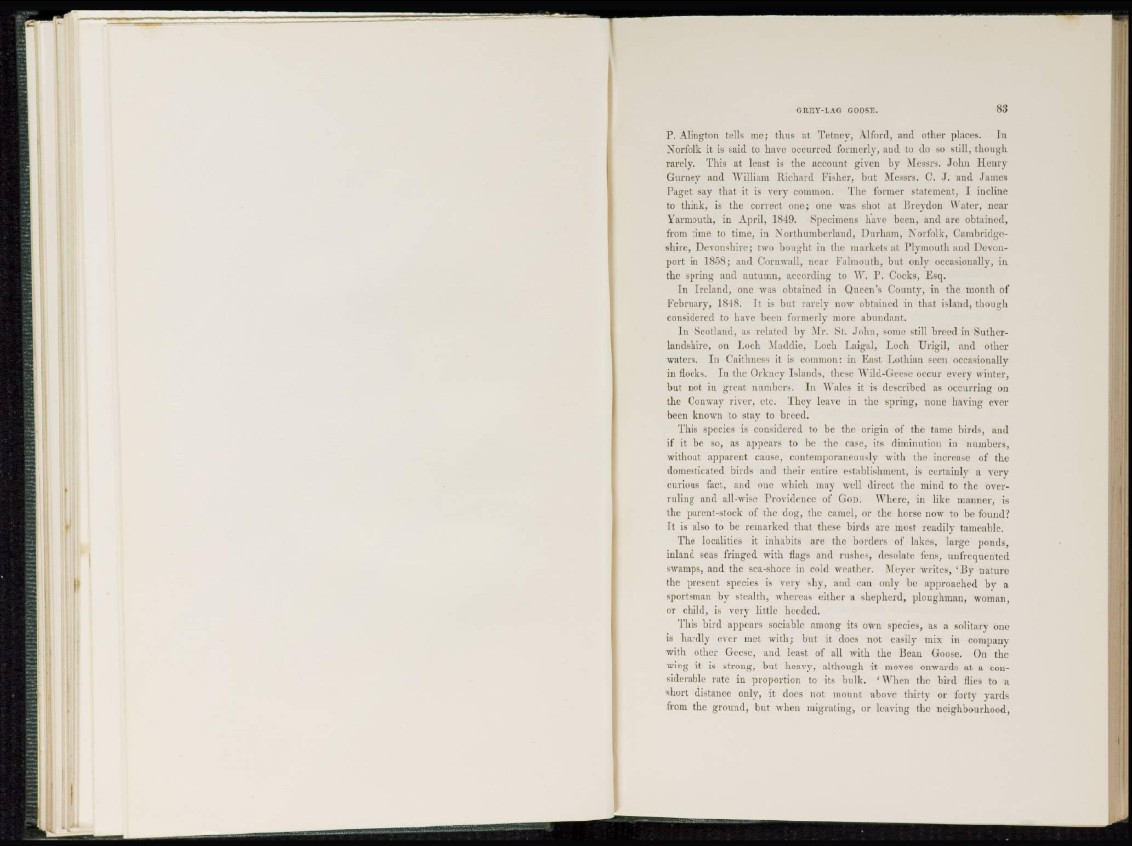
GREY-LAG GOOSE. S3
P. Alington tolls mej thus at Tetney, Alford, and other places. In
Norfolk it is said to have occurred formerly, and to do so still, though
rarely. This at least is the account given by Messrs. John Henry
Gurney and "William Richard Fisher, but Messrs. C. J. and James
Paget say that it is very common. The former statement, I incline
to think, is the correct one; one was shot at Breydon Water, near
Yarmouth, in April, 1849. Specimens have been, and are obtained,
from time to time, in Northumberland, Durham, Norfolk, Cambridgeshire,
Devonshire; two bought in the markets at Plymouth and Devonport
in 1858; and Cornwall, near Falmouth, but only occasionally, in
the spring and autumn, according to W. P. Cocks, Esq.
I n Ireland, one was obtained in Queen's County, in the month of
February, 1848. It is but rarely now obtained in that island, though
considered to have been formerly more abundant.
I n Scotland, as related by Mr. St. .John, some still breed in Sutherlandshire,
on Loch Maddie, Loch Laigal, Loch Urigil, and other
waters. In Caithness it is common: in East Lothian seen occasionally
in flocks. In (he Orkney Islands, these Wild-Gcese occur every winter,
but not in great numbers. In Wales it is described as occurring on
the Conway river, etc. They leave in the spring, none having ever
been known to stay to breed.
This species is considered to be the origin of the tame birds, and
if it be so, as appears to be the case, its diminution in numbers,
without apparent cause, contemporaneously with the increase of the
domesticated birds and their entire establishment, is certainly a very
curious fact, and one which may well direct the mind to the overruling
and all-wise Providence of GOD. Where, in like manner, is
the parent-stock of the dog, the camel, or the horse now to be found?
It is also to be remarked that these birds are most readily tameable.
The localities it inhabits are the borders of lakes, large ponds,
inland seas fringed with flags and rushes, desolate fens, unfrequented
swamps, and the sea-shore in cold weather. Meyer writes, ' B y nature
the present species is very shy, and can only be approached bv a
sportsman by stealth, whereas either a shepherd, ploughman, woman,
or child, is very little heeded.
This bird appears sociable among its own species, as a solitary one
is hardly ever met with; but it does not easily mix in company
with other Geese, and least of all with the Bean Goose. On the
wing it is strong, but heavy, although it moves onwards at a considerable
rate in proportion to its bulk. 'When the bird flies to a
short distance only, it does not mount above thirty or forty yards
from the ground, but when migrating, or leaving the neighbourhood,